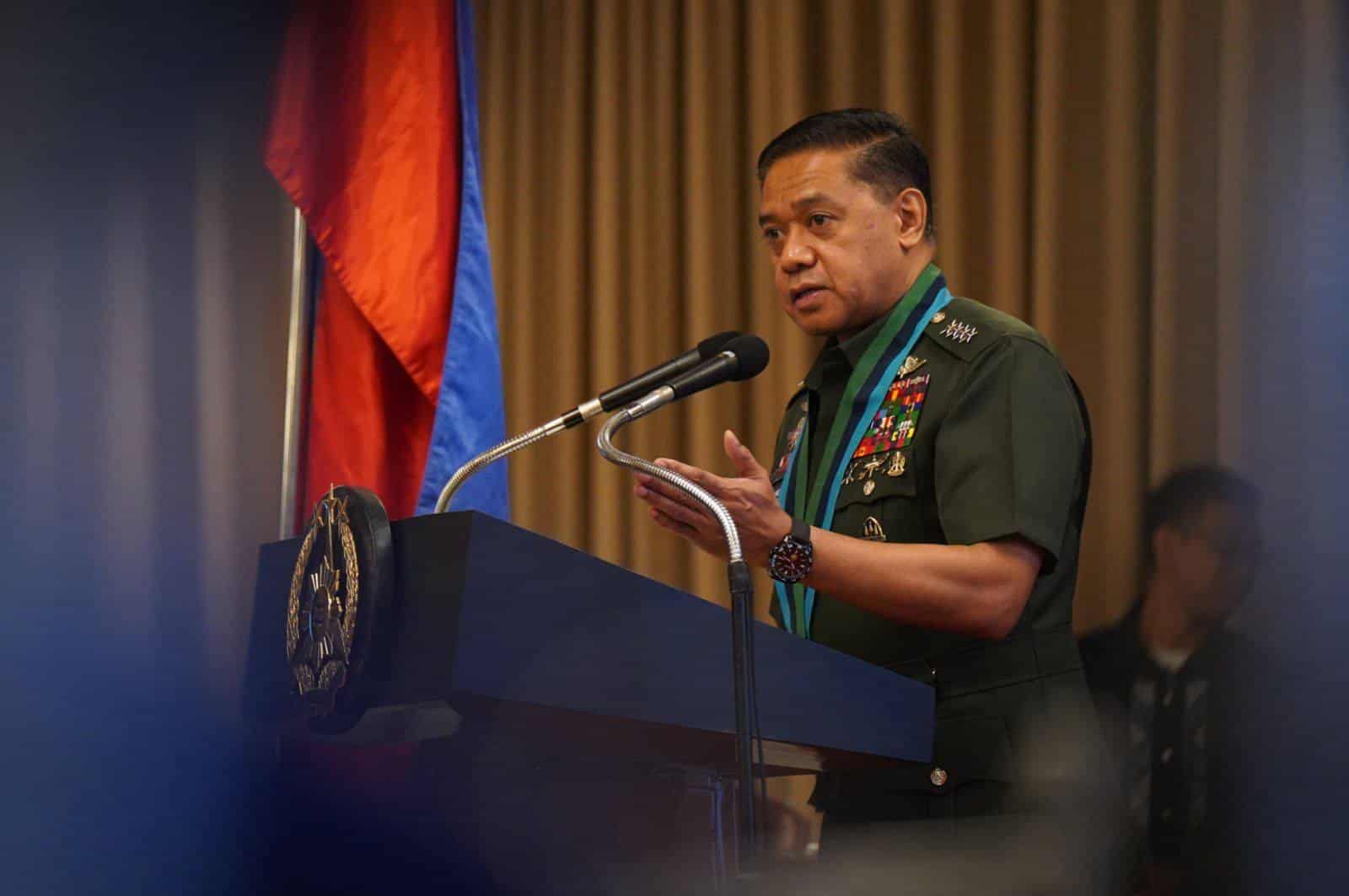China warship tried to ram PCG vessel in Scarborough Shoal — AFP chief

Armed Forces of the Philippines chief Gen. Romeo Brawner Jr. — Photo from Armed Forces of the Philippines/Facebook
MANILA, Philippines — Armed Forces of the Philippines (AFP) chief Gen. Romeo Brawner Jr. on Tuesday accused a Chinese People’s Liberation Army Navy (PLA-N) ship of attempting to ram a Philippine Coast Guard vessel near Scarborough Shoal, describing it as a new and more aggressive tactic in the West Philippine Sea.
“In the incident that happened in Bajo de Masinloc or Scarborough Shoal, we can clearly see the aggressive tactics of China. Our assessment there is the PLA Navy ship, its objective is to ram our Philippine Coast Guard,” Brawner told reporters at Camp Crame in Quezon City. “It’s a good thing our Coast Guard was able to avoid the PLA Navy and the Chinese Coast Guard. The two Chinese vessels collided.”
He said it was the first time the PLA-N directly engaged in such maneuvers. “We used to see that the ships of the Chinese Coast Guard are the ones doing it. But this time around, the PLA Navy is there,” he said.
Brawner called the move “a symbol of China’s aggressiveness” and said Beijing continues to claim Bajo de Masinloc despite the 2016 arbitral ruling that invalidated its “nine-dash line.”
The AFP chief said the military and Coast Guard will meet to discuss response options and seek guidance from President Ferdinand Marcos Jr.
READ: PCG offered help after CCG vessel collided with Chinese navy warship
‘Agressive tactics’
Recalling the 2012 Scarborough Shoal standoff, Brawner said the Philippines followed the agreement that both China and Philippines warships would leave Scarborough Shoal.
“We followed the agreement. They did not follow. So, it’s really a violation of the agreement that we had in 2012. We keep the moral high ground. That’s the order of our President. And we do not do aggressive tactics.”
On possible escalation, he said, “We have contingencies. If our Coast Guard is attacked by the PLA Navy, we have actions to do. We follow the rules of engagement. And according to the rules of engagement, we have the right to defend ourselves.”
Asked if the Mutual Defense Treaty with the United States would be triggered, Brawner said it will not be triggered yet as it “has requirements” that need to be met.
He added that the Philippines is considering various options, including joint sails with allies. “Let’s remember that we are not alone in this region. We may come together to act against these aggressive actions,” he said.
Rules of engagement
Moreover, Navy spokesperson for the West Philippine Sea, Rear Admiral Roy Vincent Trinidad, said the Chinese vessels were engaging in a “pincer move” designed to catch the BRP Suluan in the middle.
He explained that rules of engagement govern the use of force for mission accomplishment and that the AFP has been given clear guidance in West Philippine Sea operations, including at Bajo de Masinloc.
“The use of force for mission accomplishment is not authorized without infringing on the universal right of self-defense, defense of one’s unit, or defense of others,” Trinidad said in a press briefing at Camp Aguinaldo. He noted that commanders on the ground have sufficient flexibility to decide when to act.
“In conducting our resupply missions, patrols, and air surveillance flights, the use of force is not authorized except for self-defense situations,” he said. “We do not dictate on the smallest details. We leave sufficient room for interpretation by the ground commanders.” /das
For comprehensive coverage, in-depth analysis, visit our special page for West Philippine Sea updates. Stay informed with articles, videos, and expert opinions.


















